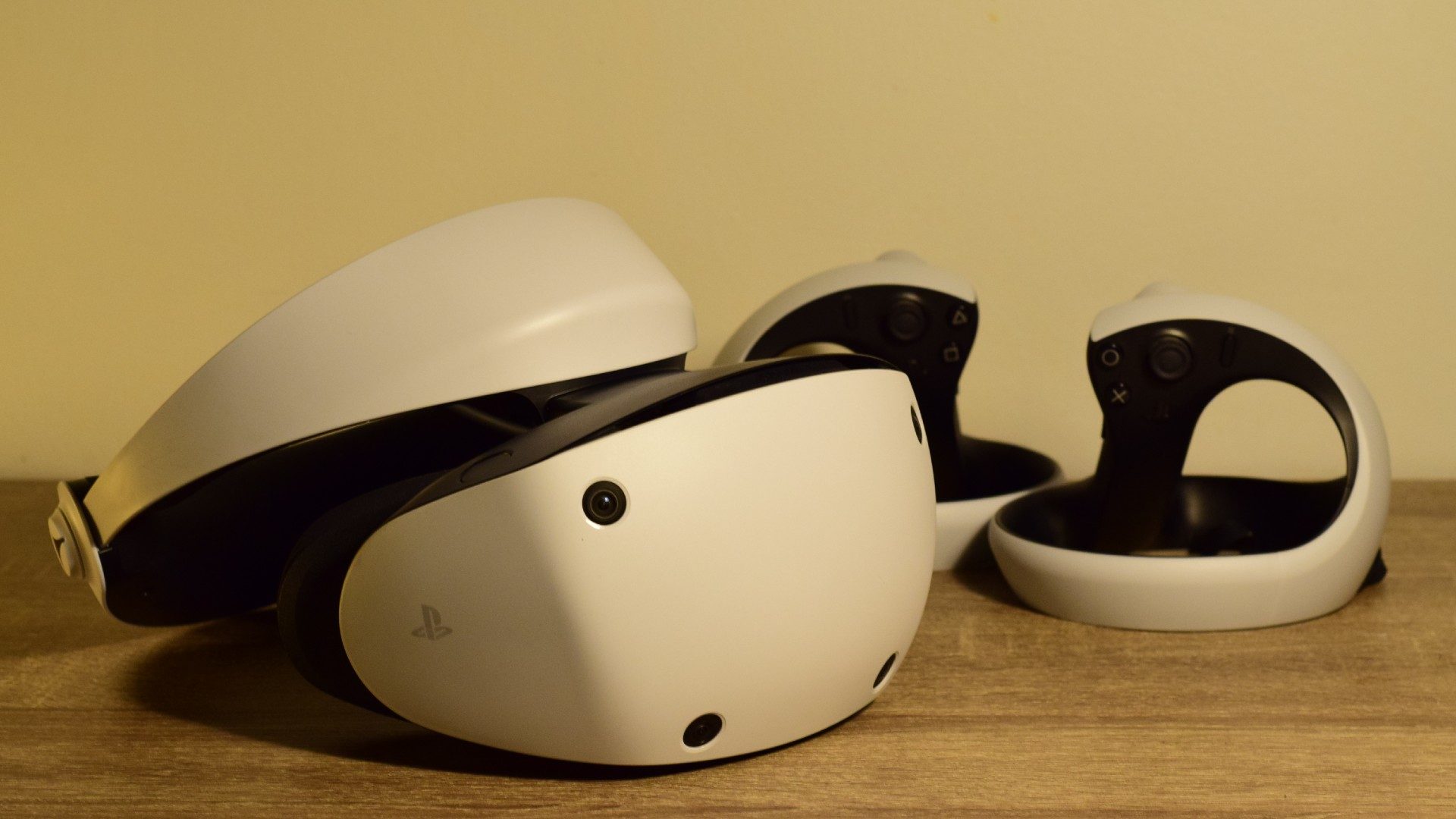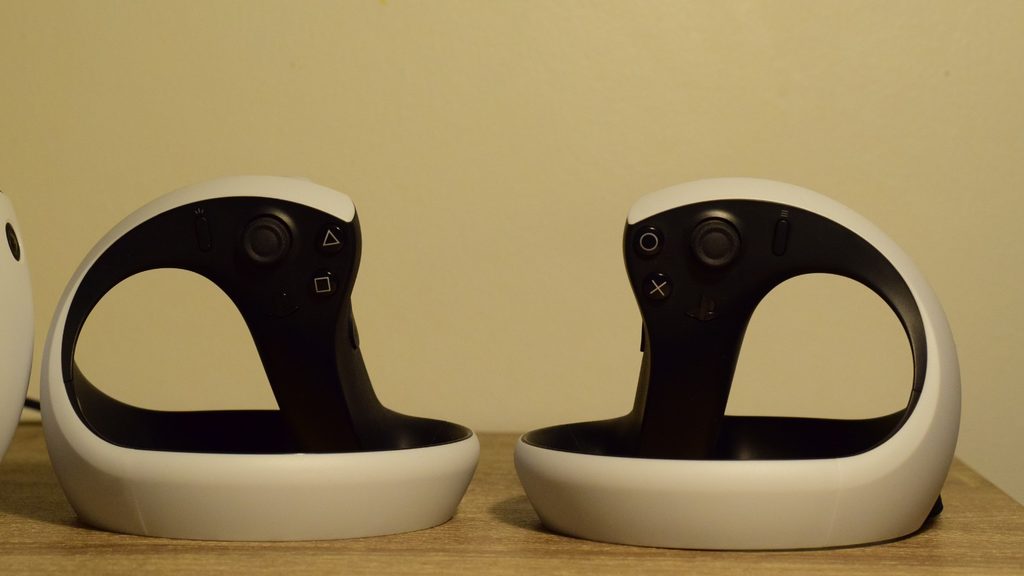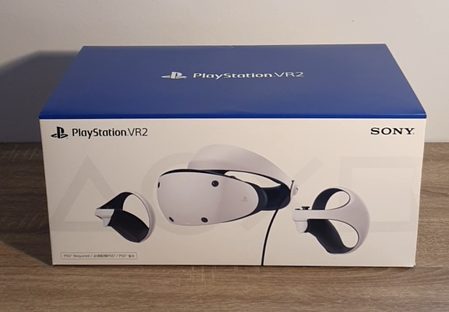SUMMARY
This is AI generated summarization, which may have errors. For context, always refer to the full article.

MANILA, Philippines – Those of us who grew up with the PlayStation during its era of pirated games in the late ‘90s and early aughts are probably better equipped now to be able to financially support a gaming hobby.
But even then, when I think about it, it’s really quite an investment to get into PlayStation’s VR platform, represented today by the next generation PS VR2, the follow up to 2016’s original PS VR. First you need to find a PS5 (easier to find one now, we heard!) and fork over P30,995. Then a PS VR2 will set you back another P34,790. That means you need around P66,000 to get into Sony’s VR ecosystem.
That the VR system is more expensive than the actual console isn’t actually surprising as the PS4 and the original PS VR had similar launch prices as well: P25,000 for the former, and P25,290 for the PS VR with the required PS Eye camera bundled. (A base package without the PS Eye for those who may already have the device went for P22,900.)
My point is, there’s quite some sticker shock involved with PlayStation’s VR gaming platform for gamers, outside of the truly hardcore ones, and those who are really looking for a one-of-a-kind console gaming experience – because despite the price of entry, it is quite the experience. But is it enough to justify the price for the regular gamer who just wants to have a bit of gaming fun after work or school?
We’ve tested a few games, and we’ll be testing more in the coming weeks and months to monitor the platform’s progress. We have our initial impressions here of the hardware, and the games we’ve tried so far in the two weeks that we’ve been playing with it.
The original PS4 is the second best-selling console of all time at 117 million units sold. The number of PS VR units sold is a fraction of that at 5 million, which was still considered to be a success by Sony but also showed that PS4 gamers who wanted the VR experience were still quite in the minority. Will the PS VR2 change that? Will it have that killer app that makes a PlayStation gamer unable to resist?
Setup and usage experience
Setup is now mercifully easy. The last PS VR had so many cables and even had its own separate processing brick. Now, it’s one cable. Plug in the headset’s USB-C cable to the PS5. Power on the headset, and it guides you through setup which takes maybe 10 minutes if it’s your first time going through it.
You’ll need to set it up when it’s your first time using the device with a different user even if it’s on the same PS5.
The VR controllers are also plugged in through a USB-C connection to introduce them to your console. After that, you use them wirelessly.
The 14.7 feet cord is a good design choice. It let me move to another part of my room which may be better suited for some VR gaming than my usual spot. Sometimes, the cable hugs the back of your left ear closely, but you just need to adjust it and get it out of the way. I haven’t yet played a game that needed a lot of movement (my preferred VR gaming position is seated) so I haven’t run into problems where the cable gets all tangled up.
Despite the headset’s size, it’s surprisingly not that heavy. There’s a button at the back that you press to loosen the headset, and then you place it on your head. You turn the dial to tighten it up. It sounds like a ratchet.
The headset feels well balanced. Most of the VR headset is in the front of your head, so you might think the weight is going to tilt forward but it doesn’t – at least not by much. Sometimes, it does tilt ever so slightly downwards that you have to readjust, otherwise things are slightly out of focus. It’s a matter of finding the right angle of the headband (what usually works for me is having the back portion much lower than the front headband portion), and the right tightness. Too tight, and your head will hurt; too loose, and the headset tilts downwards.
Like with my previous experience with the Oculus/Meta Quest 2, I do find myself readjusting the headset from time to time. It’s a lot easier to put on or take off the Quest 2 though, which just uses a simpler elastic headband. However, the problem with that is there’s pressure on the front of your face. After using the Quest 2, you’ll have marks on your face, like the marks left by putting tight rubber bands on your wrist for example. There’s none of that with the PS VR 2. The device locks itself around the top of your head, with the VR glasses seemingly hanging down onto your eyes gently.
The headset also has a vibration function that you feel on the front portion of the headband. It’s a nice addition to the experience, one that makes you go, “oh, that’s new” and makes you want to hunt out games that specifically make use of that function. So far, it’s certainly added to the immersion.
One thing I like about the headset also is its passthrough button found at the bottom of the headset near the power button. This takes you out of virtual reality, and lets you see your actual surroundings, which is very useful when you suddenly need to look for the TV remote or the traditional controller. I don’t know if the Quest 2 had that function in my one year of using the device. I simply took it off, which is harder than just having a dedicated button as is the case with the VR2.
With the controllers, it takes a little getting used to if you’re fumbling to find it while in virtual reality. It’s best to just exit virtual reality with the passthrough mode first to put them on.
One thing you will want to buy for the controllers is a charging station (there’s an official Sony one, and other third party options) which would allow you to charge them simultaneously through one USB-C cable. Otherwise, you’ll be charging each VR controller separately, and then you’ll have to find another charger for your traditional controller too.
I love that you can also use the VR2 as a screen for your so-called “flat” non-VR games as well. It’s like having a really good display, and you can adjust the screen size. It’s great for tuning out the world around you, and just focusing on the game. But I wouldn’t say it’s a replacement for your TV as it’s still not as comfortable as lying on your bed or couch without a contraption on your head.

But it’s a beautiful screen whether for VR or for traditional games with rich HDR, contrast, and a very crisp image thanks to its OLED panel. The HDR especially looks amazing in the VR2’s flagship title Horizon: Call of the Mountain. You can almost feel the warmth of the sun, as its rays shoot through and are dispersed through the leaves softly from the trees above, and it’s beautiful.
I’m also on a regular 60Hz TV when I use the PS5, so the VR headset’s 120Hz refresh rate is something I really appreciate. The 120Hz rate also applies to video content and not just games.
One disappointment though is you can only play videos or streaming content from Netflix at 1080p, not 4K. And it also doesn’t appear to have upscaling for these types of content. While it does help you tune out the rest of your surroundings as well when watching a movie, some Netflix movies (I tried the sci-fi film Arrival) look a little muddy although some content like anime with bright scenes (Studio Ghibli’s Tales From Earthsea) look lively and vibrant.
A midrange 4K TV, overall, would be an easier watch though, especially for longer sessions, considering again that a headset over your head can get uncomfortable over time.
Some physical commitment required
Using the VR2 is actually quite a physical commitment for those who typically get to play after the end of the day. If your eyes and neck are already tired from being in front of the PC at work or school, a VR session can sometimes feel overwhelming, and feels maybe twice as demanding on the eyes as playing on a regular TV. But the sense of immersion is so great that I get the desire to play for even a half hour for a quick escape from reality. It’s that feeling of being transported to a different dimension that makes VR rewarding.
Still, the best way, at least for me, to really experience it is when you’re well-rested.
A puzzle game called Puzzling Places where you piece together 3D jigsaw puzzles of interesting places is soothing, while the Moss games where you feel like you are this omniscient being inside beautiful dioramas guiding a hero mouse have been my favorite. Horizon: Call of the Mountain is a breathtaking showpiece for the visual potential of VR2 games, which will have you just gawking at the scenery, inspecting the game’s dino-bot hybrids, and inspecting every bit of detail on other characters’ faces, expressions, and design.
Call of the Mountain is an important game for Sony as it makes you think of the possibilities and potential of other AAA titles such as Sony’s own God of War and The Last of Us games, and possibly other top third-party franchises such as Final Fantasy, Cyberpunk 2077, or The Witcher series being made into a VR game. We certainly hope more of these games some day make a VR attempt as Resident Evil has with its games, including its latest, Village.
A side note: I can’t play Resident Evil in VR. It’s several times as scary as the regular game. In fact, a horror game might not be the best first game for VR newbies, especially as most of us will also be contending with VR motion sickness as well. Add monsters to the mix, and well, good luck.
The feeling of being able to shoot guns in VR though is amazing (I’ve tried them out in the shooting range in Resident Evil Village) and am looking forward to games like Pavlov, a competitive shooter which I’ve been hearing good things about. Gran Turismo 7 in VR has also been described as the true flagship for Sony, allowing you to fully appreciate the racing game’s obsessive attention to detail.
We’ll have longer reviews of individual VR games in the coming weeks. But for now, we’ll end with some notes on VR motion sickness. What happens is that when your body moves in virtual reality, your brain gets confused as your actual body stays stationary, leading to motion sickness. What has worked for me is slowing down the movement speed (thankfully, some games have this option); putting in vignetting, which reduces your field of vision when moving; or mimicking physical movement when you’re making a move in the game.
In case you were curious about getting dizzy in VR, it does really take some training to get used to VR movement. In my experience after a week or so on slower settings, I’ve tried switching back to regular speeds, and my motion sickness seems to be weaker. Take it slow, train yourself, and if it’s bad you can start with maybe really short sessions of 5 or 10 minutes, and build up your capacity.
Motion sickness is only problematic for me when playing first person games, but in games like Moss or Puzzling Places where you have a more stationary view of surroundings, I’m fine. On the Quest 2, I’ve only played lightsaber-esque music rhythm game Beat Saber, which requires you to be standing and moving, and I never experienced motion sickness there as well.
We’ll be back another time for the actual game reviews! – Rappler.com
Add a comment
How does this make you feel?


![[GAMES & GADGETS] Product announcements, prices, and promos: July 2024](https://www.rappler.com/tachyon/2024/06/gadgets-and-games-dev-story.jpg?resize=257%2C257&crop=287px%2C0px%2C720px%2C718px)



There are no comments yet. Add your comment to start the conversation.